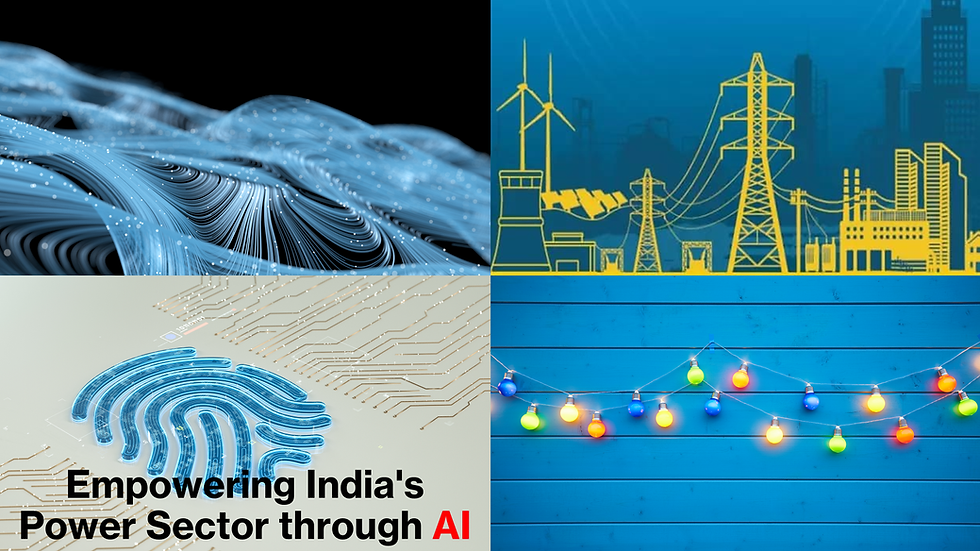India's power sector is a critical component of its economy and society, with increasing demand driven by industrial growth, urbanization, and electrification of rural areas. However, the sector faces significant challenges, including supply-demand imbalances, transmission and distribution losses, and the integration of renewable energy sources. Artificial Intelligence (AI) offers transformative potential to address these challenges, enhancing efficiency, reliability, and sustainability.
Issues Facing the Power Sector in India:
Supply-Demand Imbalance: Peak demand often outstrips supply, leading to frequent power outages.
Transmission and Distribution (T&D) Losses: High T&D losses, averaging around 20%, result in significant inefficiencies.
Renewable Energy Integration: Managing the intermittent nature of renewable energy sources like solar and wind.
Grid Management: Ensuring grid stability and resilience against faults and cyber-attacks.
Consumer Management: Meeting the diverse and dynamic energy needs of consumers effectively.
How AI can be effectively utilized in India:
AI technologies, including machine learning (ML), predictive analytics, and optimization algorithms, can address these challenges through the following applications:
Demand Forecasting:
AI Techniques: Machine learning models (e.g., regression, neural networks) can predict energy demand with high accuracy.
Benefits: Accurate demand forecasting helps in better planning and reduces the risk of blackouts.
Predictive Maintenance:
AI Techniques: Predictive analytics and anomaly detection models can foresee equipment failures.
Benefits: Reduces downtime and maintenance costs, enhances reliability.
Smart Grid Management:
AI Techniques: Reinforcement learning and optimization algorithms for real-time grid management.
Benefits: Enhances grid stability, efficient load balancing, and fault detection.
Renewable Energy Integration:
AI Techniques: Forecasting models for renewable energy production, optimization algorithms for energy storage and distribution.
Benefits: Improves the integration of renewables, reduces dependency on fossil fuels.
Energy Theft Detection:
AI Techniques: Data mining and anomaly detection algorithms to identify non-technical losses.
Benefits: Reduces T&D losses, improves revenue for utilities.
Consumer Energy Management:
AI Techniques: Personalized energy usage recommendations, dynamic pricing models.
Benefits: Enhances consumer satisfaction, promotes energy conservation.
Implementation of AI Technologies:
Benefits of AI Integration:
Challenges and Considerations:
Future Outlook and Recommendations:
Policy Support: Formulating policies to encourage AI adoption in the power sector, including incentives and funding for R&D.
Capacity Building: Training workforce in AI and data analytics skills.
Collaborative Ecosystem: Fostering collaboration between government, industry, and academia to drive innovation.
Scalability and Integration: Developing scalable AI solutions that can be seamlessly integrated with existing infrastructure.
Data Infrastructure: Building robust data collection, storage, and sharing mechanisms to support AI applications.
Conclusion:
AI has the potential to revolutionize India's power sector by addressing key challenges and unlocking new efficiencies. By leveraging AI technologies, India can enhance the reliability, sustainability, and cost-effectiveness of its power supply, ultimately contributing to economic growth and improving the quality of life for its citizens. Strategic initiatives, policy support, and collaborative efforts are essential to realize the full potential of AI in this sector.
*****











Comments